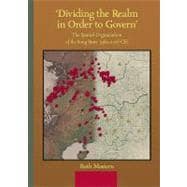
| Tables, Maps, Illustrations, and Figures | p. xiv |
| Map Standards and Conventions | p. xviii |
| Abbreviations | p. xx |
| Prologue | p. 1 |
| A Proposal to Change the Jurisdiction of Two Frontier Counties | p. 2 |
| Territory and State Power | p. 6 |
| The Spatial Organization of State Power as a Field of History | p. 8 |
| ôDividing the Realm in Order to Governö | p. 11 |
| The Meaning of Territory | |
| The Political Economy of Spatial Change in Imperial China | p. 19 |
| Theorizing Spatial Organization in Imperial China | p. 20 |
| Spatial Political Economy in the Tang-Song Transition | p. 23 |
| Structural Constraints on Spatial Organization | p. 25 |
| Song Territory in Historical Perspective | p. 30 |
| The Spatial Organization of State Power in Song China | p. 35 |
| Between Court and Prefecture: Provincial Circuits | p. 36 |
| Prefectures | p. 38 |
| Counties | p. 46 |
| Households, Garrisons, Towns, and Cantons | p. 51 |
| Conclusion: The Prefecture and County Ideal and the Political Reality | p. 55 |
| Following the Tracks of Yu: Depictions of Imperial Territory | p. 57 |
| Debating the Spatial Landscape | p. 58 |
| The Tribute of Yu and the Persistence and Transformation Tradition | p. 61 |
| Locating Territory in Space | p. 73 |
| Spatial Information at Court and Beyond | p. 90 |
| Conclusion: Millions of Maps | p. 98 |
| The History of Territory | |
| ôStrengthen the Trunk and Weaken the Branchesö: The Fall and Rise of the Territorial State (750-1005) | p. 103 |
| Founding the Song State | p. 104 |
| From Satraps to Bureaucrats | p. 108 |
| This Land Is Song Land, or Making Empire Continental | p. 130 |
| A Stable Landscape for an Established Empire | p. 162 |
| ôEnrich the State and Let the People Prosperö: Spatial Organization in China's Long Eleventh Century (1005-1127) | p. 166 |
| Pilot Spatial Renovation During Renzong's Reign (1023-64) | p. 168 |
| Reform and Reaction Under Shenzong (r. 1068-86) and Zhezong (r. 1086-1101) | p. 182 |
| Frontier Footprints in the Huizong Reign (1101-26) | p. 210 |
| The Historical Arc of Northern Song Territory | p. 219 |
| The End of the Middle-Period Spatial Cycle (1127-1368) | p. 222 |
| Making the Southern Song | p. 226 |
| New Forms of Wartime Spatial Organization | p. 228 |
| The End of the Song Cycle and the New Logic of Yuan | p. 255 |
| Appendix | |
| The Digital Gazetteer of Song China | p. 263 |
| How Trustworthy Is the Data? | p. 264 |
| From the Alphabetical List to the Gazetteer to the GIS | p. 268 |
| Spatial Analysis and Historical Research | p. 273 |
| Notes | p. 277 |
| Works Cited | p. 317 |
| Index | p. 343 |
| Table of Contents provided by Ingram. All Rights Reserved. |
The New copy of this book will include any supplemental materials advertised. Please check the title of the book to determine if it should include any access cards, study guides, lab manuals, CDs, etc.
The Used, Rental and eBook copies of this book are not guaranteed to include any supplemental materials. Typically, only the book itself is included. This is true even if the title states it includes any access cards, study guides, lab manuals, CDs, etc.